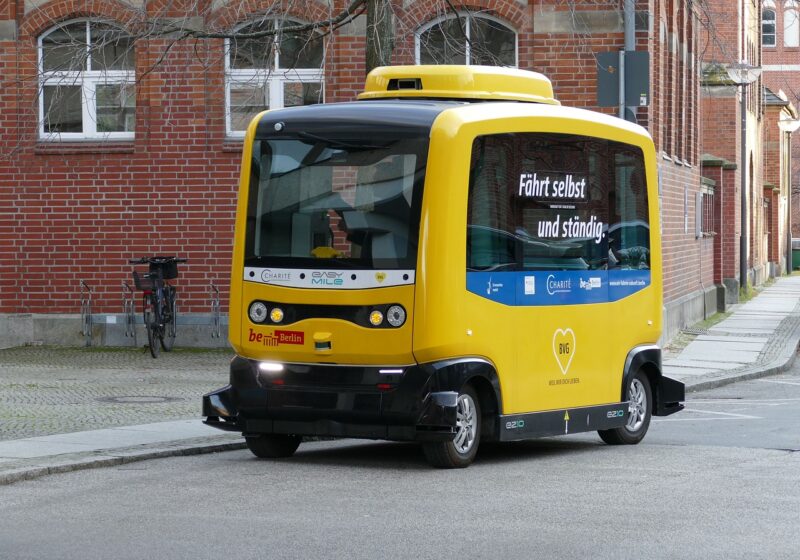
The world of transportation is undergoing a seismic shift, one that promises to redefine how we commute, interact with our vehicles, and manage urban mobility. Central to this transformation is Artificial Intelligence (AI), which is not just a buzzword in technology but a pivotal force driving change in our transportation ecosystems.
1. Understanding AI in Transportation
AI encompasses various technologies, including machine learning, natural language processing, and computer vision. In transportation, these technologies work together to optimize routes, enhance safety, and improve efficiency across various forms of transport, from personal vehicles to public transit systems.
The rise of AI in transportation is characterized by its ability to analyze vast amounts of data in real time, allowing for quicker decision-making and smarter outcomes. For instance, AI systems can process data related to traffic patterns, vehicle performance, and even weather conditions to suggest alternate routes or prevent accidents before they occur.
2. The Role of Autonomous Vehicles
Autonomous vehicles (AVs) are perhaps the most visible representation of AI’s impact on transportation. Companies like Tesla, Waymo, and Uber are at the forefront of developing self-driving technology that aims to make the roads safer and reduce traffic congestion.
But how is AI redefining the concept of commuting? Here are several significant ways:
- Safety Improvements: Autonomous technology is designed with numerous sensors and algorithms that can predict and avoid accidents. Studies suggest that AVs could significantly reduce the number of road injuries and fatalities caused by human errors, accounting for over 90% of traffic accidents today.
- Efficiency Gains: AI-powered navigation systems can optimize routing for AVs by analyzing real-time traffic data and adjusting routes continuously, enabling a smoother flow of traffic and reducing travel times.
- Reduced Traffic Congestion: As more AVs hit the roads, coordinated vehicle-to-vehicle communication could allow for efficient management of traffic lights and intersections, thereby minimizing bottlenecks that currently plague our urban streets.
As we look to the future, the integration of AVs into everyday commuting could change the landscape of transportation, allowing individuals to use their travel time more productively, whether they choose to relax, work, or engage with smart applications while on the go.
3. The Rise of Smart Public Transportation
Public transportation systems are also embracing AI. Cities worldwide are implementing AI technologies to improve services, reduce costs, and enhance user experience. Smart transportation systems leverage data analytics to predict ridership patterns, optimize schedules, and enhance safety protocols.
Here are a few ways AI is revamping public transportation:
- Dynamic Routing: AI can help transportation agencies dynamically adjust routes based on real-time demand, making services more responsive and efficient. For instance, ride-sharing services and on-demand shuttles can better serve communities by minimizing wait times and adjusting availability based on usage patterns.
- Enhanced Passenger Experience: AI-driven applications provide information on bus and train schedules and alerts, greatly improving the user experience. Additionally, AI chatbots can assist passengers in real-time to answer questions and help with ticket purchases.
- Maintenance Predictions: AI algorithms can predict maintenance needs by analyzing data from sensors installed on vehicles, ensuring that they are serviced at optimal times and reducing the occurrence of breakdowns that would hinder service delivery.
With these enhancements, public transportation will not only become more efficient but also more appealing to commuters, potentially leading to a shift away from personal vehicle usage.
4. AI and Traffic Management Systems
Traffic congestion is a chronic issue in most cities, costing billions in lost wages and fuel every year. AI’s ability to analyze real-time traffic data makes it a game-changer for traffic management systems. By coordinating traffic signals, monitoring vehicle flows, and analyzing congestion patterns, AI can significantly reduce traffic congestion.
Incorporating AI-powered traffic management systems can provide several benefits such as:
- Real-Time Adjustments: AI can analyze current traffic conditions and adjust signal timings accordingly, ensuring that the flow of traffic is smoothest at all times. This adaptive approach not only saves time for commuters but also reduces emissions from idling vehicles.
- Predictive Analysis: Using historical and real-time data, AI can predict traffic patterns and prepare traffic management systems for peak times, improving overall road safety and efficiency.
- Emergency Response Optimization: AI can assist in identifying and alleviating traffic blockages during emergencies, ensuring that emergency vehicles reach their destinations as quickly as possible.
The future of city design will likely lean heavily on these intelligent traffic systems, leading to safer, more efficient, and sustainable urban mobility.
5. The Environmental Impact of AI in Transportation
As climate change continues to threaten our planet, the pressure is on for the transportation sector to reduce its carbon footprint. AI technologies are proving to be invaluable in this endeavor by optimizing fuel usage, promoting electric vehicle (EV) adoption, and increasing awareness around sustainable transport solutions.
Key contributions include:
- Optimized Energy Consumption: AI systems can monitor driving patterns and vehicle performance to optimize energy consumption, particularly for electric vehicles, extending battery life and reducing charging needs.
- Integrating Renewable Energy Sources: AI can help create more efficient systems for deploying renewable energy in transportation networks, enhancing the use of green energy in EV charging stations and public transportation options.
- Promoting Shared Mobility Solutions: By analyzing patterns in commuting data, AI can encourage shared mobility, thereby reducing the number of vehicles on the road and lowering emissions.
Sustainability is becoming one of the critical cornerstones for future transportation systems, and AI is set to play a significant role in driving meaningful change in this regard.
Conclusion: The Road Ahead
AI is not just a phenomenon of the future; it’s already making waves in how we approach transportation today. As we continue to innovate and integrate smarter systems into our commutes, the hope is for a safer, more efficient, and environmentally friendly transportation landscape. The advent of autonomous vehicles, intelligent public transit systems, optimized traffic management, and sustainable practices signifies a pivotal change in the way we navigate our cities.
The road ahead is filled with promise, and as technology evolves, we must embrace it with an open mind, understanding that the future of transportation holds enormous potential to reshape our commuting experience forever.





